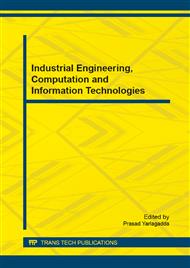p.274
p.279
p.283
p.288
p.293
p.297
p.303
p.308
p.312
Background Subtraction Based on Pulse Coupled Neural Network
Abstract:
Dynamic environments often bring great challenges to moving object detection. Solving this problem will promote expansion of application fields of moving object detection. Unlike those background subtraction methods using local feature-based background models, inspired by integrity of human visual perception, we present a background subtraction method for moving object detection in dynamic environments, building its background models based on global features extracted by pulse coupled neural network. We employ the pulse coupled neural network to take good advantage of their global coupling characters, in order to imitate the human biological visual activity. After sensing images via the pulse coupled neural network, we extract global information of the scenes and then build background models robust to background disturbances based on the global features. Experimental results prove that, our method behaves well in terms of visual and quantitative evaluations for dynamic environments.
Info:
Periodical:
Pages:
293-296
Citation:
Online since:
December 2014
Authors:
Price:
Сopyright:
© 2015 Trans Tech Publications Ltd. All Rights Reserved
Share:
Citation:


